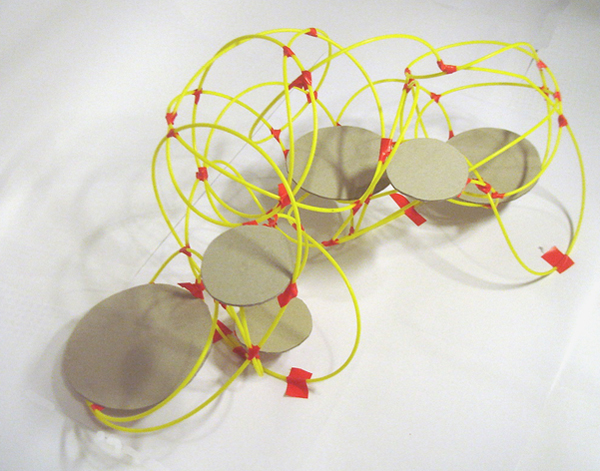Book – Architectural Dimensions at Large
Megeastructures have a fascination of their own, blurring the attention to detail with the impression of now detail at all. Especially in the way such a structure manages to trick the impression of scale is in it self a fascination.
The last century has seen many different styles, but the megastructures had a sort of live of their own fitting in with most of them or none of them. This fascination sort of developed in parallel or through out the styles, mainly in the late sixties and seventies.

Image taken from mg-lj / A sketch of
Ville Spatial project spanning across the horizon .
They are still a big topic. The office producing the most megastructure proposals is definitely BIG, led by Bjarne Ingels. Is basically the practice’s solution to anything. However the most beautiful recent megastructure is probably Steven Holl Architects’ Beijing project.
The megastruture was especially in after the 1950 a big topic, sort of at the end of the modernist area. Yona Friedman, who is branded one of the fathers of the megastructure, presented his project ‘Ville Spatiale‘ at the last CIAM congress in 1956 in Dubrovnik. The invention of the structure, its conception and purpose was however not at all intended aesthetically as it might be nowadays. Friedman formulates the motivation as “The Ville Spatial is in fact harmony between individual, extreme individual and community”.
In a new ActarBirkhauser and AA MUSAC publication edited by Maria Inés Rodriguez with the title Yona Friedman: Architecture with the People, by the People, for the People the architect and artist Yona Friedaman’s projects and ideas are republished and critically discussed with contributions by Kenneth Frampton, Manuel Orazi and Hans Ulrich Obrist.

Image taken from deconcrete / A sketch of Métropol Europe showing the different hubs of Europe and how they form sub areas.
Yona Friedman was born in Budapest, Hungary in 1923 and lives and works in Paris. He studied at the Technical University in Budapest (Budapesti Műszaki és Gazdaságtudományi Egyetem) and in Haifa. His work has spanned areas ranging from architecture, art and animated film to education and writing. He has participated in numerous art biennials including Shanghai, Venice and Documenta 11. His highly visionary ideas have nurtured various generations of architects and urbanists, influencing groups such as Archigram and even Kenzo Tange, who declared as such in 1970 in Osaka.
It is a monograph looking back at the work by this fascinating architect who is actually many other things too, but does in most of his projects refer back to architecture. The publications presents a range of his projects, with a focus on the tree main works he is still continuing. The Métropole Europe, the Ville Spatial and the Museum are the sort of main strands in the book.

Image taken from Yona Fridman Blog / A model at the scale of 1:50 of the Iconostase structure for a outdoor museum.
The contributions discuss the work in context and Hans Ulrich Obrist’s interview with Yona Fridman provides a sort of link to the present as wel as probably the future. Thanks to this part of the book, the reader gets a sense of actuality. With its retrospective setting one could easily believe these topics to be a thing of the past, but the interview brings it tot he here and now as something that is still happening.
And yes it is, Friedman is still okring on his projects and he has so many upcoming projects, it’s fascinating. He’s go his Museums set up in Singapore and Italy, shoed the Iconostase at the Art Basel last year and showed a prototype of the Ville Spatial at the Biennale in Venice last year.

Image taken from amazon / Book cover.
Rodriguez, M.I. ed., 2011. Architecture with the People, by the People, for the People: Yona Friedman, Barcelona: Actar.
